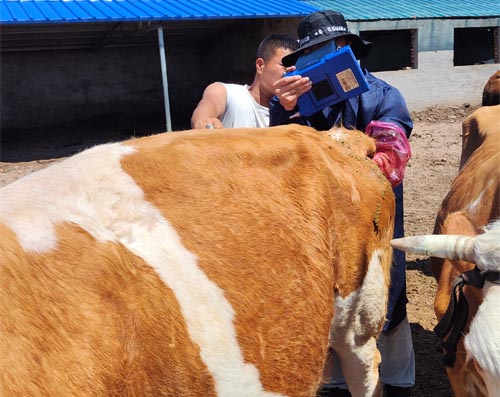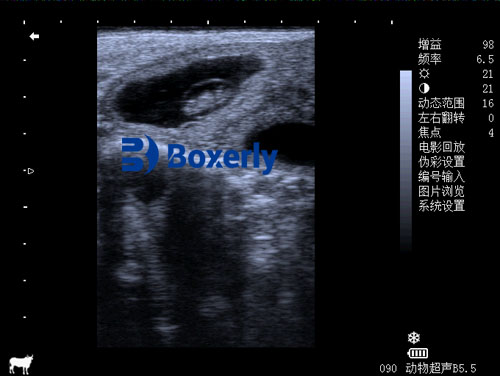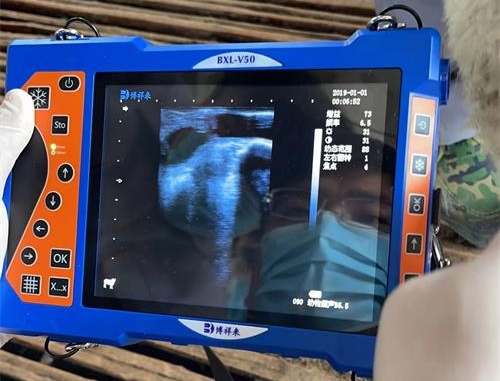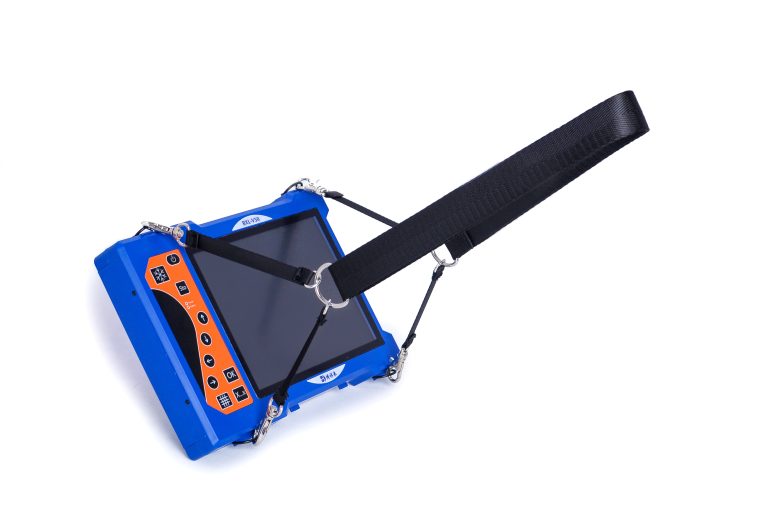Real-time Fetal Monitoring in Cattle Using Mobile Ultrasound Solutions
In modern cattle farming, ensuring the health and development of the unborn calf is crucial not only for animal welfare but also for maximizing farm productivity and economic returns. Real-time fetal monitoring using mobile ultrasound technology has emerged as a game-changing tool that allows farmers and veterinarians to track the progress of pregnancy with accuracy and convenience. This article explores how mobile ultrasound solutions are revolutionizing fetal monitoring in cattle, incorporating international perspectives on its applications, benefits, and challenges.

The Importance of Fetal Monitoring in Cattle
Pregnancy in cattle is a complex physiological process, lasting approximately 283 days on average. Monitoring the fetus’s development during this period is essential to detect any complications early, assess fetal viability, and make informed management decisions such as nutritional adjustments, health interventions, and timing of calving assistance.
Traditionally, fetal monitoring relied heavily on manual palpation and observation of the dam’s behavior. However, these methods lack precision and may fail to detect subtle or early-stage issues. The advent of ultrasound technology has transformed this process by providing direct, real-time visualization of the fetus, placenta, and uterus.
Mobile Ultrasound Technology: A New Era for On-Farm Monitoring
Ultrasound technology itself is not new in veterinary practice, but mobile ultrasound devices have made it far more accessible for on-farm use. Unlike bulky and stationary ultrasound machines confined to clinics, mobile ultrasound units are compact, battery-operated, and designed to be rugged enough for farm environments.
Key features of mobile ultrasound units include:
-
Portability: Lightweight devices can be carried easily to different pens or fields.
-
Battery operation: Ensures extended use without dependency on fixed power sources.
-
Real-time imaging: Enables immediate assessment during the examination.
-
User-friendly interfaces: Touchscreens and intuitive controls make it easier for operators with minimal training.
-
Connectivity: Some units can save images and videos digitally and even transmit data wirelessly for remote consultation.
From the viewpoint of livestock farmers in the US, Australia, and parts of Europe, mobile ultrasound systems have become invaluable for efficient herd management. They allow frequent fetal checks, reducing stress on animals and minimizing disruptions to daily farm routines.

Applications of Mobile Ultrasound in Real-time Fetal Monitoring
Mobile ultrasound devices support a wide range of fetal assessments in cattle, including:
1. Pregnancy Confirmation
Early pregnancy detection is critical to avoid unnecessary feeding costs on non-pregnant cows and to improve herd reproductive efficiency. Using transrectal or transabdominal ultrasound probes, pregnancy can be confirmed as early as 28-30 days post-insemination. Mobile devices facilitate quick checks right on the farm without requiring animal transport.
2. Fetal Viability and Heartbeat Monitoring
Real-time visualization of the fetal heartbeat is one of the most reassuring indicators of fetal viability. The heart rate can be observed directly on the ultrasound screen, enabling detection of distress or potential fetal death early. This is especially important in high-value breeding stock or where a history of reproductive issues exists.
3. Assessment of Fetal Growth and Development
By measuring parameters such as crown-rump length, biparietal diameter, and femur length, veterinarians and farmers can track fetal growth relative to expected gestational age. Mobile ultrasound solutions provide an immediate assessment of whether the fetus is developing normally, allowing timely nutritional or medical interventions.
4. Placental Health and Uterine Environment
The placenta’s appearance and uterine condition can also be examined to detect abnormalities such as placentitis, which can threaten pregnancy. Ultrasound imaging can reveal excessive fluid, tissue irregularities, or inflammation, guiding prompt treatment.
5. Detection of Multiple Fetuses
In some breeds or management systems, twins or multiples occur and can affect calving risks. Mobile ultrasound allows for early detection and better planning for difficult births.

Benefits of Real-time Fetal Monitoring via Mobile Ultrasound
The international livestock community recognizes several key advantages that real-time mobile ultrasound monitoring brings to cattle reproduction management:
-
Increased Accuracy and Early Diagnosis: Mobile ultrasound provides visual proof of pregnancy and fetal health much earlier than traditional methods, enabling early decision-making.
-
Enhanced Animal Welfare: Early detection of fetal or maternal complications means quicker intervention and reduced suffering.
-
Cost Efficiency: Avoids wasted feed and veterinary expenses on non-pregnant cows, and reduces losses from late-term abortions or stillbirths.
-
Improved Calving Outcomes: Monitoring fetal size and position helps anticipate difficult births and prepare assistance if needed.
-
Data-Driven Management: Digital recording of ultrasound findings supports breeding program optimization and long-term herd health tracking.
Challenges and Limitations
Despite the benefits, the adoption of mobile ultrasound for fetal monitoring in cattle also faces certain challenges:
-
Operator Skill Requirement: Accurate interpretation of ultrasound images requires training. Misinterpretation can lead to wrong decisions.
-
Initial Investment Cost: Though mobile devices are less expensive than full-size ultrasound machines, they still represent a significant investment for small-scale farms.
-
Limited Penetration Depth: Some mobile units may have less imaging depth compared to stationary units, limiting visibility in larger or late-stage pregnant cows.
-
Environmental Constraints: Dust, moisture, and temperature extremes on farms can affect equipment durability and performance.
Addressing these issues involves providing better training programs for farmers and technicians, developing more robust devices, and integrating AI-assisted image interpretation to reduce user error.
International Perspectives and Research Insights
Research studies worldwide support the growing use of mobile ultrasound in cattle fetal monitoring:
-
A 2022 study from the University of Queensland, Australia, demonstrated that mobile ultrasound improved pregnancy diagnosis rates by 15% compared to rectal palpation alone, reducing calving interval times and improving herd fertility indexes.
-
In the United States, extension programs have promoted mobile ultrasound adoption among beef producers to enhance reproductive management, noting significant economic gains from reduced open cows and improved calving success.
-
European researchers have explored the use of mobile ultrasound combined with telemedicine, allowing remote experts to assist local farmers in image interpretation, thus expanding access in rural areas.
Practical Tips for Implementing Mobile Ultrasound in Cattle Fetal Monitoring
For cattle farmers or veterinarians planning to incorporate mobile ultrasound, some practical guidelines include:
-
Select Appropriate Equipment: Choose a device that suits herd size, farm conditions, and user experience. Devices with interchangeable probes (transrectal and transabdominal) offer flexibility.
-
Invest in Training: Attend workshops or work with experienced vets to learn probe handling, image acquisition, and interpretation.
-
Schedule Regular Checks: Perform fetal monitoring at strategic gestation points — early pregnancy confirmation, mid-gestation growth check, and late gestation viability assessment.
-
Maintain Equipment Properly: Follow manufacturer instructions for cleaning, storage, and battery care to prolong device lifespan.
-
Leverage Digital Tools: Use devices with image storage and sharing capabilities to create herd records and consult remotely when needed.
The Future of Mobile Ultrasound in Cattle Reproduction
As technology advances, mobile ultrasound systems are expected to become more powerful, affordable, and user-friendly. Integration with artificial intelligence may soon enable automated fetal health assessment, reducing reliance on expert operators. Additionally, combined use with other smart farm technologies—such as wearable sensors and herd management software—could create comprehensive reproductive health platforms.
Increasing awareness and adoption of mobile ultrasound solutions will be vital to improving reproductive efficiency, animal welfare, and profitability in cattle farming worldwide.

Conclusion
Real-time fetal monitoring in cattle using mobile ultrasound technology represents a significant step forward in livestock management. It offers precise, immediate insights into pregnancy status, fetal health, and development, enabling informed decision-making that benefits both the animals and the farm’s bottom line.
From pregnancy confirmation to detecting fetal distress and assessing growth, mobile ultrasound empowers farmers and veterinarians with tools once only available in clinics. While challenges remain, ongoing technological and educational advancements continue to lower barriers to widespread adoption.
For cattle producers committed to modern, data-driven reproductive management, mobile ultrasound is no longer a luxury but a necessity for optimizing outcomes and sustainability.
References
-
Cerri, R. L., et al. (2022). Advances in mobile ultrasound technology for cattle reproductive management. Journal of Veterinary Science and Technology, 13(4), 198-212. https://doi.org/10.4172/2157-7579.1000598
-
University of Queensland, School of Veterinary Science (2022). Improving pregnancy diagnosis in beef cattle with mobile ultrasound. https://vet.uq.edu.au/research/ultrasound-pregnancy-diagnosis
-
National Cattlemen’s Beef Association. (2023). Mobile ultrasound benefits and applications. https://www.ncba.org/education/technology/mobile-ultrasound




